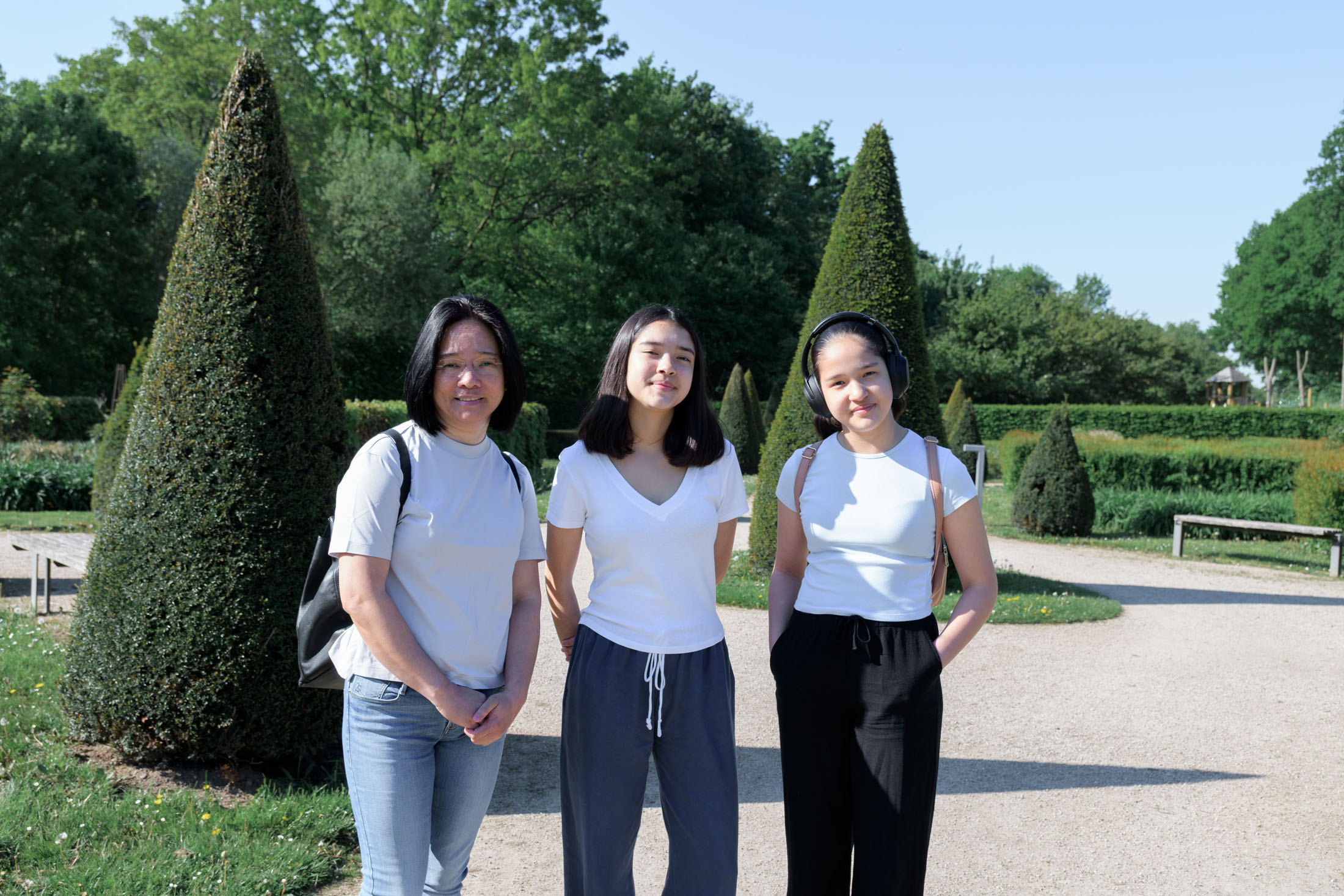
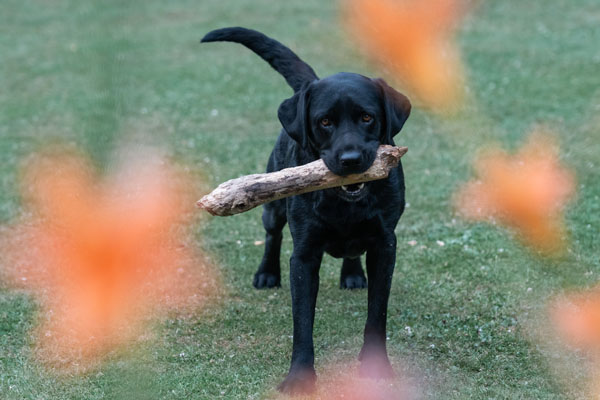
Trixi
Trixi is a lively Labrador with a heart as big as her cheerful character. She has a very special passion—shoes (she’s just a girl after all): No shoe is safe from her, whether it’s old, new, dirty, or clean. For Trixi, there’s nothing better than running around with a shoe in her mouth, as if she were carrying the greatest treasure in the world. But despite her adventurous spirit, she also has her little fears. Rain is her biggest enemy. No sooner does a raindrop fall than she hides under the sofa as if the world were about to end. But woe to you if there’s water! That’s when Trixi transforms into a true water-loving dog. She loves splashing in puddles, swimming in the lake, and shaking herself off thoroughly after every swim. Trixi is the embodiment of contrasts: a brave adventurer and a cuddly dog, always open to new experiences—as long as it’s not raining. And that’s exactly what makes her a unique and lovable companion.
View Images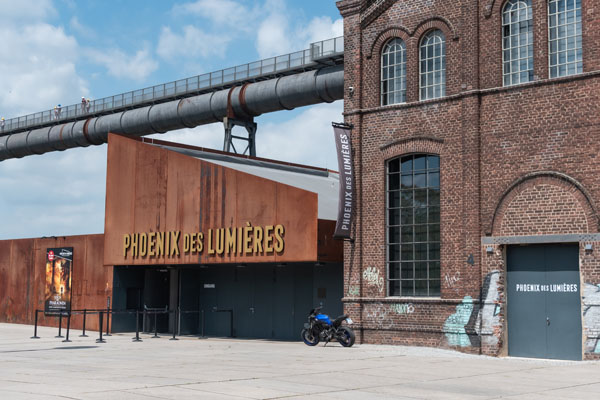
Asterix & Obelix
At Phoenix des Lumières in Dortmund, the exhibition “Asterix and Obelix – an immersive adventure” brings the beloved comic heroes to life in a completely new way. Visitors are transported into a 360-degree world where scenes from Gaul, Egypt, Britain, and Rome unfold through large-scale projections and a dynamic soundtrack. The former industrial halls of Phoenix West are transformed into a colorful, animated storybook, allowing guests to follow Asterix, Obelix, and Dogmatix on their journey—accompanied by lively music and iconic quotes from the comics. The experience is designed for families, comic enthusiasts, and anyone curious to see the adventures of the Gauls from a fresh perspective. Thanks to immersive technology, visitors find themselves right in the middle of Roman battles or sailing stormy seas with pirates. Phoenix des Lumières blends modern digital art with classic comic culture to create a truly unique and engaging experience.
View Images
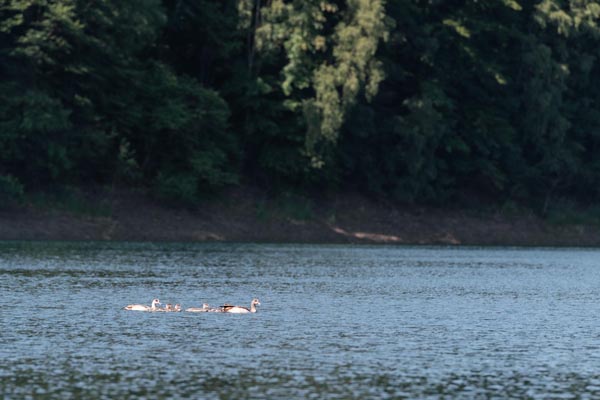
Bigge See
The Biggesee and the Listertalsperre together form an impressive water landscape in the Sauerland region, serving both recreation and drinking water supply. Gentle hills surround the deep blue water, which stretches calmly between forested shores. Small bays and peninsulas invite visitors to linger, while sailboats glide leisurely across the surface. The connection between the two reservoirs creates a diverse natural and leisure area that attracts visitors with its quiet beauty and fresh air. In the early morning hours, a light mist often hangs over the lake, giving the landscape an almost magical appearance.
View Images
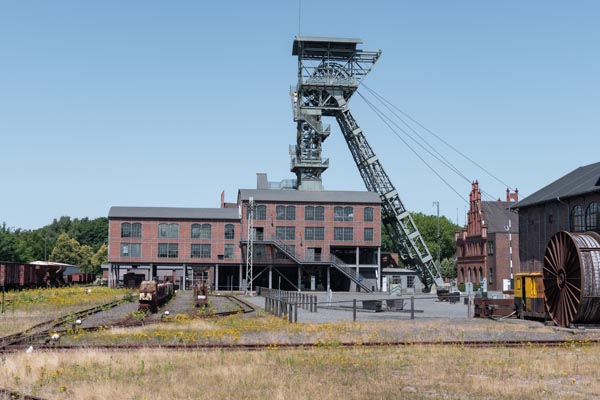
Zeche Zollern
The Zollern Colliery in Dortmund is much more than a disused coal mine – it’s considered one of the most beautiful industrial monuments in Germany and is often referred to as the "Castle of Labour." Built around 1900 as a model mine, it impresses with its magnificent architecture: brick buildings in neo-Gothic style blend with elements of Art Nouveau and cutting-edge technology of the time. The highlight is the machine hall, whose colorful glass portal and ornate design make it look more like a cathedral than an industrial facility. After its closure in 1966, the colliery became a symbol of industrial heritage preservation. Today, it’s part of the LWL Industrial Museum and a place where history comes to life – with exhibitions, events, and a vivid glimpse into the working world of the past. A visit combines stunning aesthetics with a fascinating journey into the Ruhr region’s industrial history.
View Images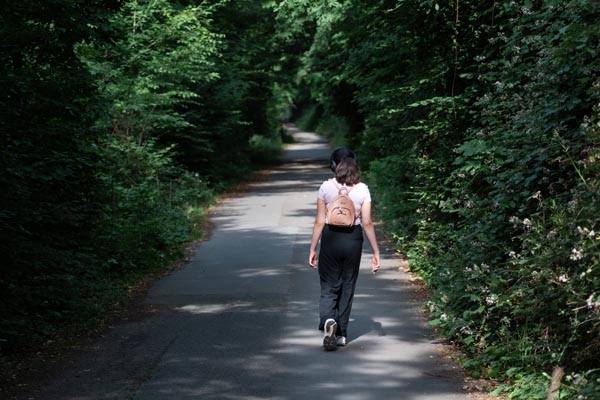
Hengsteysee Hagen
The Hengsteysee is a picturesque reservoir in the Ruhr region, located between the towns of Hagen, Herdecke and Dortmund. It was completed in 1929 and serves as a lower reservoir for a pumped storage power plant. The lake has an area of around 1.36 km² and a length of around 4.2 km. Its course follows the Ruhr and it is operated by the Ruhrverband. There is an approximately 6.5 km long foot and cycle path around the lake, which is ideal for walking, jogging, cycling or inline skating. There are benches and small restaurants along the way that invite you to linger. For water sports enthusiasts, the Hengsteysee offers numerous activities such as sailing, rowing and canoeing. There is a boat hire service and several sports clubs, including the Seglergemeinschaft Hengsteysee e.V. and the Kanu-Club Hagen 1953 e.V. A particular highlight is the outdoor pool on the southern shore of the lake, which is equipped with a 50-metre pool, a stainless steel slide and a children's playground. Since 2022, the adjacent beach house has been converted into a year-round restaurant with overnight accommodation. A new jetty, which was opened at the end of October 2024, connects the beach house with the lakeside promenade and offers a breathtaking view of the lake. The circular trail around Lake Hengstey is recommended for a relaxed circular walk. This leads through shady sections of forest and offers beautiful views of the water time and again. Two starting points are located at the “Bikertreff” parking lot at Dortmunder Straße 98 and at the Hengstey run-of-river power station at Seestraße 56 .
View Images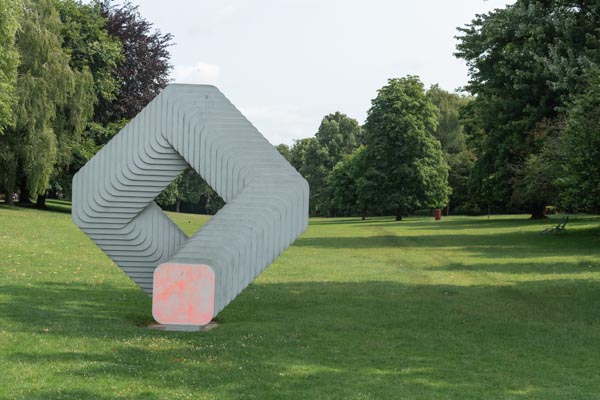
Grugapark Essen
The Grugapark in Essen is a versatile recreational area covering around 70 hectares in the district of Rüttenscheid. It was created in 1929 from the Great Ruhrland Horticultural Exhibition and has been expanded and redesigned several times since then. Today, the park combines nature, art, leisure and education in a unique way. The heart of the Grugapark is the Botanical Garden, which was created in 1927 as a teaching and experimental garden. Here visitors will find an impressive collection of plants from all over the world, including tropical rainforests, cacti, bonsai trees and a Westphalian cottage garden. The plant show houses also offer exotic rarities from different climate zones. The Grugapark is a real paradise for families. Children can let off steam on the numerous playgrounds, master the low ropes course or take a trip around the park on the Grugabahn. Ponies, goats, rabbits and guinea pigs are waiting to be stroked in the small animal garden. The free-flight hall is home to over 500 animals, including flamingos, ibises and various bird species.
View Images
Phoenixsee Walk
The Phoenix Lake in Dortmund-Hörde is an outstanding example of successful structural transformation in the Ruhr region. On the site of the former Hermannshütte steelworks, which was used for industrial purposes for 160 years, a modern recreational area with a lake, residential buildings, commercial spaces, and leisure facilities was developed between 2005 and 2011. The flooding of the 24-hectare lake began on October 1, 2010, and was completed in May 2011. The artificial lake is 1.2 kilometers long and has a maximum width of 320 meters. Its maximum depth is approximately 4.6 meters. It serves not only as a local recreational area but also contributes to flood protection and the renaturation of the Emscher River. A special highlight is the phosphate elimination plant, which filters up to 90 cubic meters of lake water per hour to ensure water quality. A 3.2 kilometer-long circular path surrounds the lake, inviting visitors to walk, jog, cycle, or skate. On the so called "Culture Island" on the western shore stands a relic from the industrial era – the "Thomasbirne," a remnant of the former steelworks. For families, there is a playground and the "Whisper Bridge," an interactive artwork by Jan Bormann. The Phoenix Lake has developed into a vibrant district with around 2,000 housing units. Approximately 121 companies have also established themselves there, primarily from the service, gastronomy, and media/IT sectors. The entire project was budgeted at 230 million euros, with nearly half financed through land sales, public funding, and the City of Dortmund’s own contributions.
View Images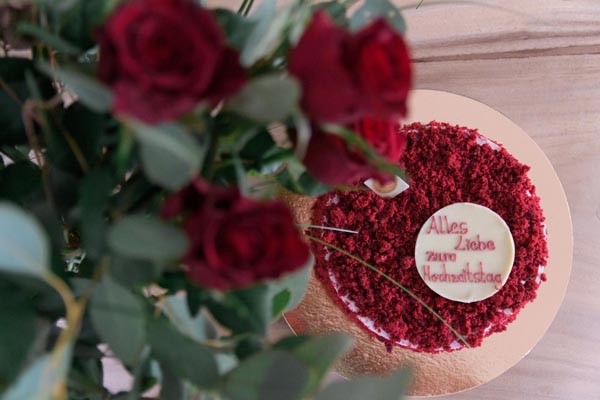
Wedding Anniversary
Two decades hand in hand - with you by my side, every step was a gift. In these 20 years, we have not only laughed, dreamed and mastered challenges together, but also raised two wonderful daughters, who are our greatest pride today at 12 and 15. Our love has taken root, grown and created a family that we can be proud of with all our hearts. I wouldn't want to go down this path with anyone else - and I look forward to everything that is yet to come.
View Images
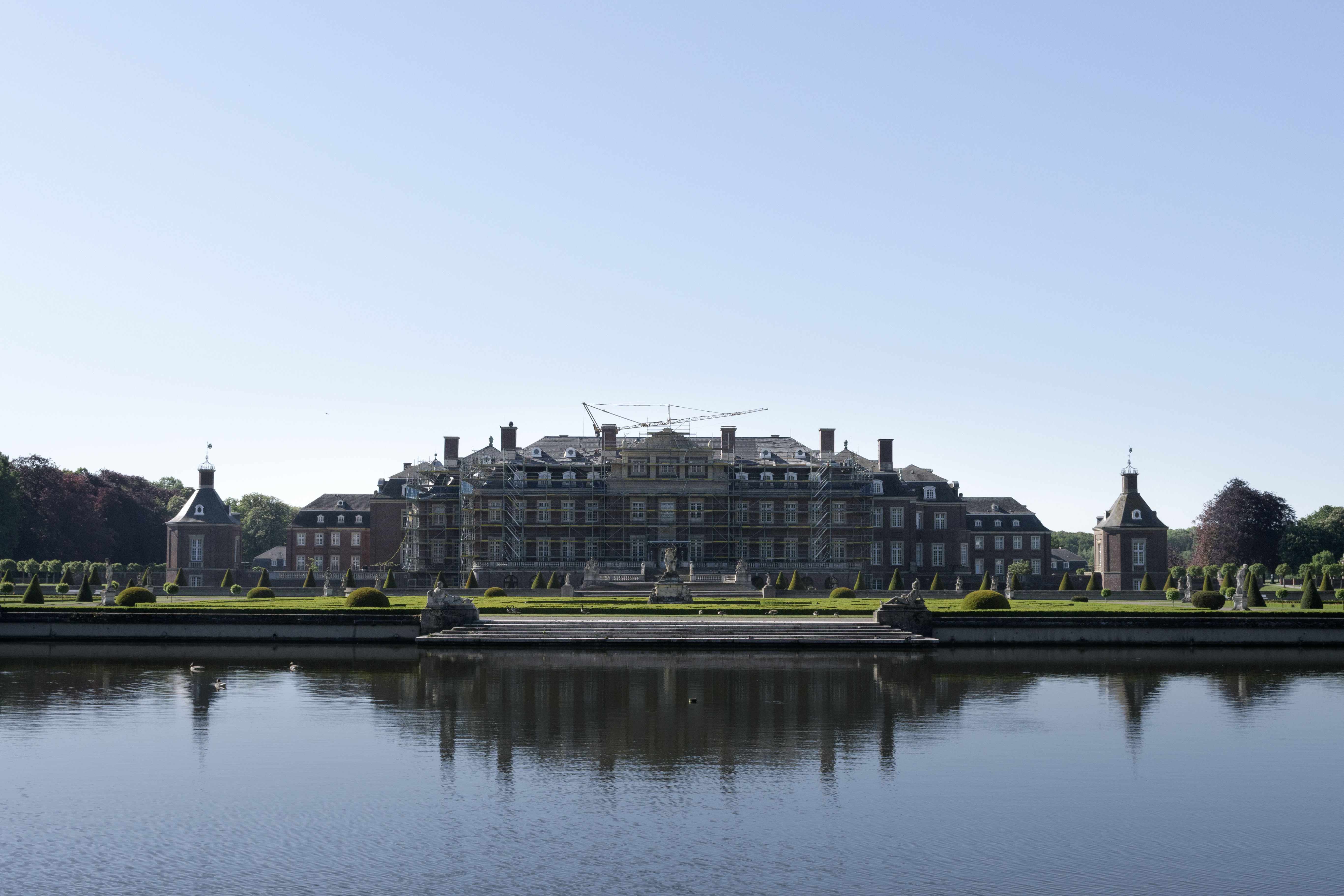
Nordkirchen Castle
Schloss Nordkirchen, located in the western Münsterland region, is often referred to as the "Versailles of Westphalia" due to its Baroque architecture and expansive park. The largest moated castle in Westphalia was built between 1703 and 1734 under the direction of Prince-Bishop Friedrich Christian von Plettenberg-Lenhausen and the architect Johann Conrad Schlaun. The castle complex consists of a symmetrically designed corps de logis with corner pavilions, flanked by side wings that house a castle chapel and administrative offices. The façades combine red brick with light-colored sandstone and slate from the Sauerland region, a typical feature of regional Baroque architecture. The adjacent castle park covers around 70 hectares, with avenues, ponds, and ornamental gardens throughout. A special highlight is the "Venus Island", a symmetrically arranged garden area inspired by French models. In addition to exploring the architecture and gardens, the castle also hosts regular cultural events. A highlight is the Classical Open-Air Concert "SOMMER. NACHT. MUSIK.", which will take place on August 23, 2025, in the castle's main courtyard. Under the direction of Viennese conductor Michael Zlabinger, the "festival:philharmonie westfalen" will present a musical program featuring works by Händel, Smetana, and Suppé. Schloss Nordkirchen is therefore not only a significant example of Baroque architecture, but also a vibrant cultural center that captivates visitors with its history and beauty.
View Images
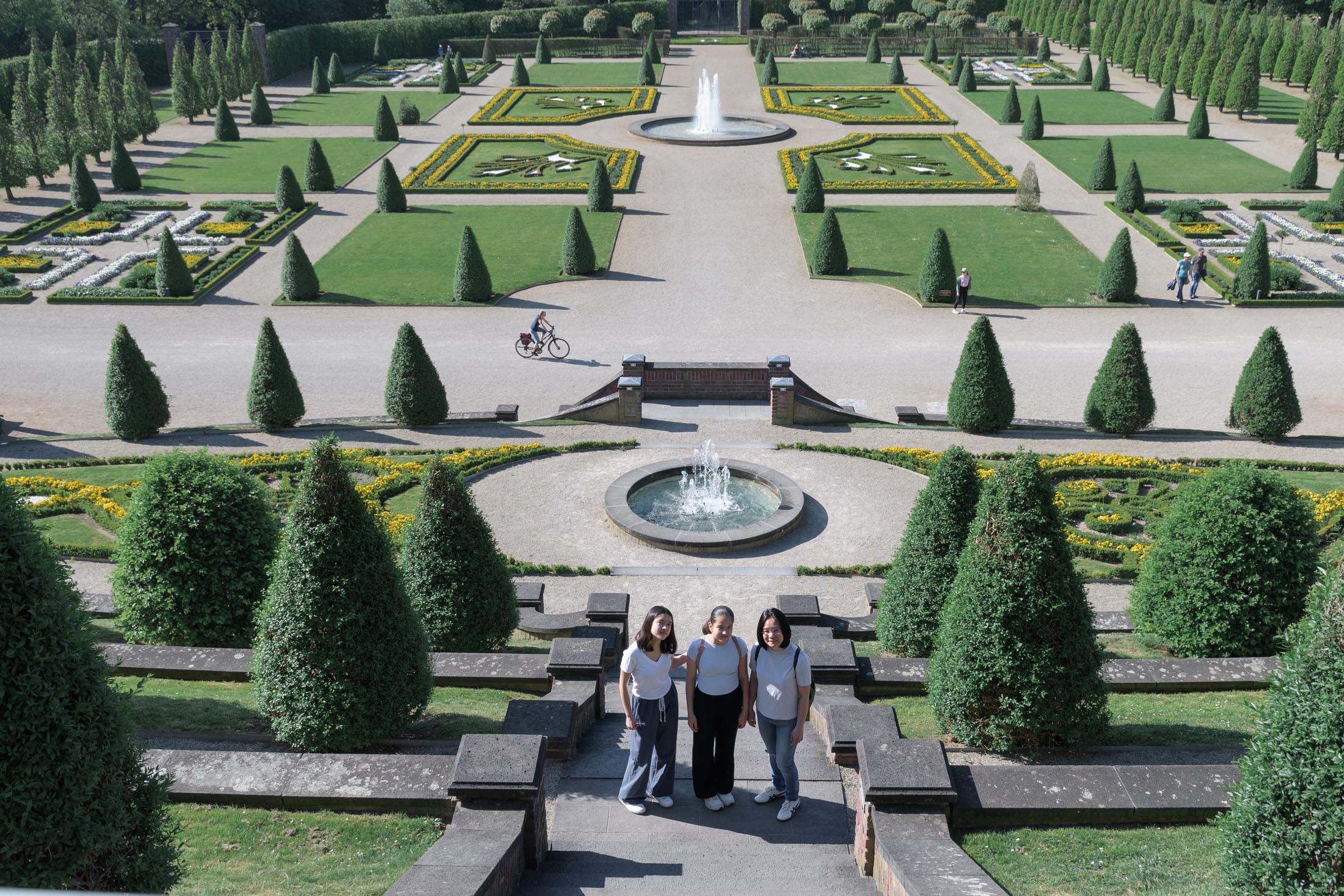
Kamp Monastery
Some Kloster KaKloster Kamp in Kamp-Lintfort (NRW) is a historic Cistercian monastery with over 890 years of history. Founded in 1123 as the first Cistercian monastery on German soil, it has experienced numerous ups and downs, including periods of destruction and reconstruction. After secularization in 1802 and use by Carmelite monks until 2002, the site now serves as a spiritual and cultural center. The simply designed church with its neo-Gothic reredos altar and an organ from the early 18th century is an important testimony to Cistercian architecture. The museum in the monastery documents the eventful history of the village with exhibits such as the “Kamper Antependium”, an altar curtain from the 14th century, and the “Kamper Family Tree” from 1728. The baroque garden, laid out between 1740 and 1750, extends over four terraces and was originally equipped with fruit trellises, flower parterres and an orangery. Today it is a popular place for walks and events.
View Images
Halde Sky Staircase
The stairway to heaven on the Rheinelbe spoil tip in Gelsenkirchen leads up 359 steps over 52 meters to the top of the former spoil tip. The staircase is particularly impressive at night thanks to LED lighting and offers a sweeping view over the Ruhr region. The staircase is an impressive work of art by environmental artist Herman Prigann. The sculpture consists of 35 irregularly stacked concrete blocks, which originally served as the foundations of a colliery building in Dortmund. It rises to a height of around 12 meters and offers a fascinating view over the Ruhr region. The ascent to the Himmelstreppe is via three spiral ramp paths that wind their way through the former industrial wasteland. Once at the summit, an external staircase with 66 steps leads to the top of the sculpture . nachtzeichen.de gelsenkirchen.de The Rheinelbe spoil tip is accessible free of charge at all times and is ideal for walks, hikes or cycle tours. It is an important example of the transformation of former industrial areas into recreational areas and a popular destination for art and nature lovers.
View Images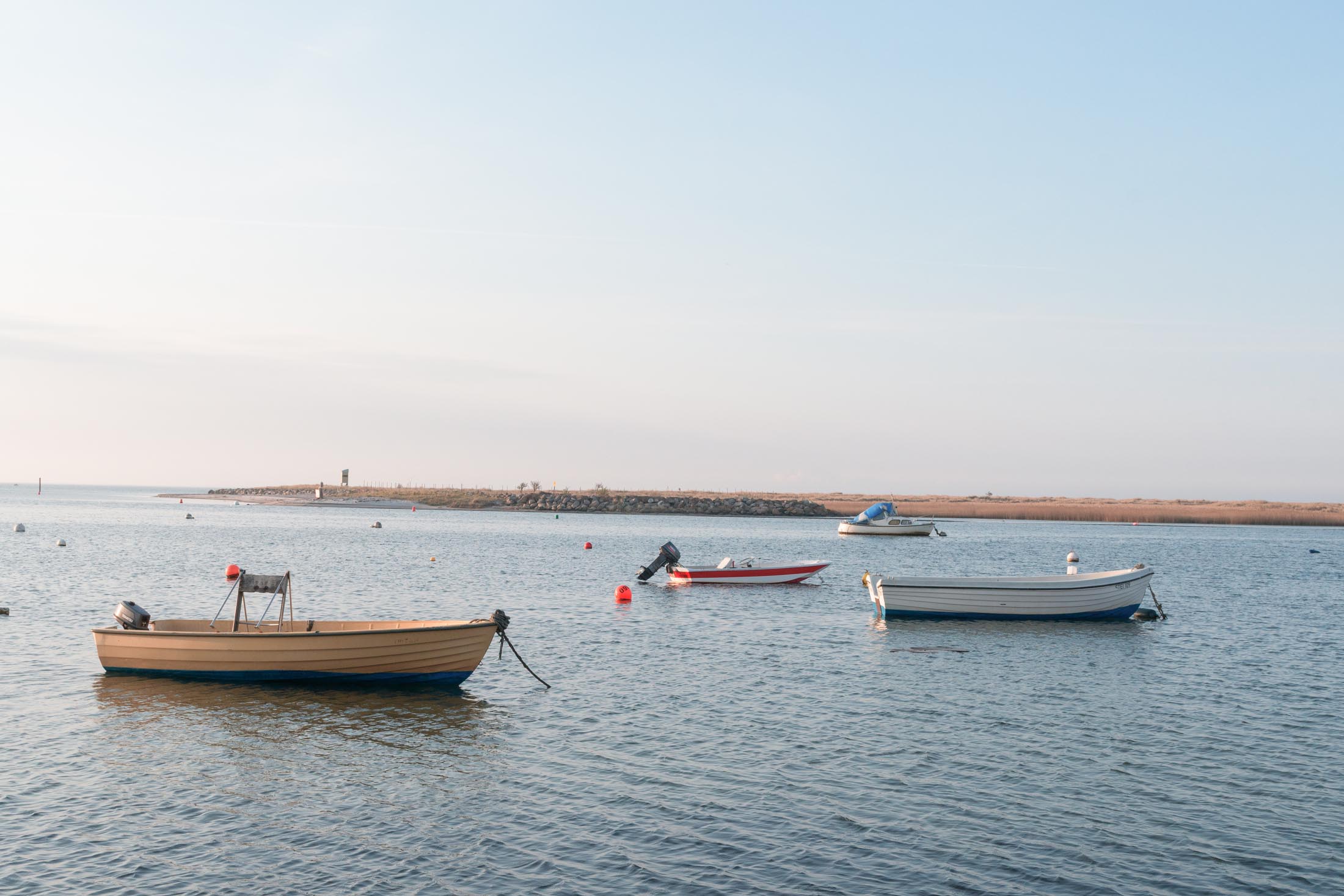
Wendtorf
Wendtorf is an idyllic vacation resort on the Kiel Fjord in Schleswig-Holstein, which is particularly popular with sailors and nature lovers. The modern Wendtorf marina invites you to linger with its real wooden jetties and direct access to the Baltic Sea.
View Images
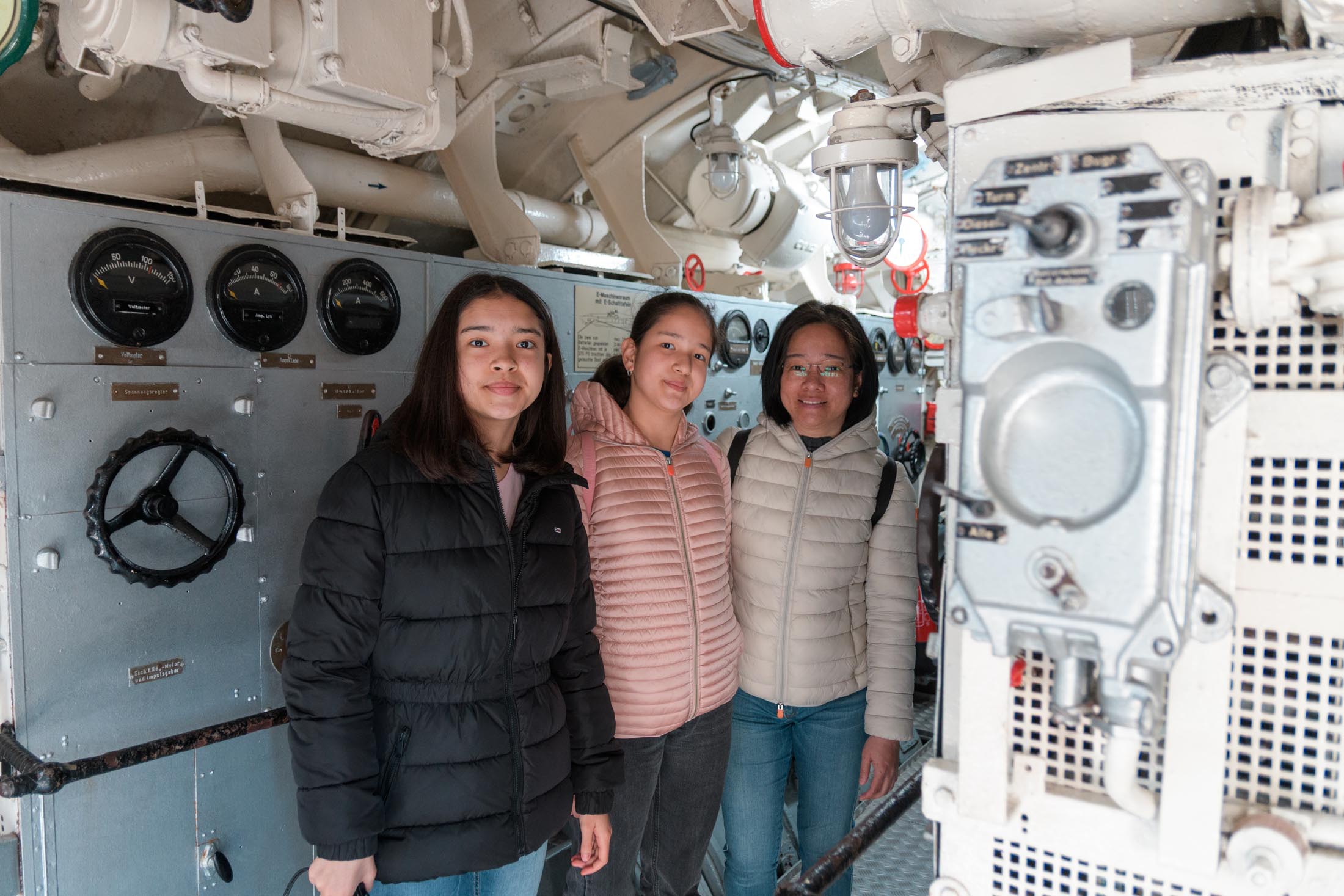
Laboe
Laboe is a small, picturesque town on the Kiel Fjord, around 20 kilometers north-east of Kiel. Laboe is particularly famous for its naval memorial, which commemorates the fallen sailors of both world wars, and for the U 995 submarine, which can now be visited as a museum. The town offers a beautiful, fine sandy beach with a view of passing ships - ideal for relaxation and maritime observation. Laboe is a popular excursion destination and vacation resort that charmingly combines tranquillity, nature and history.
View Images
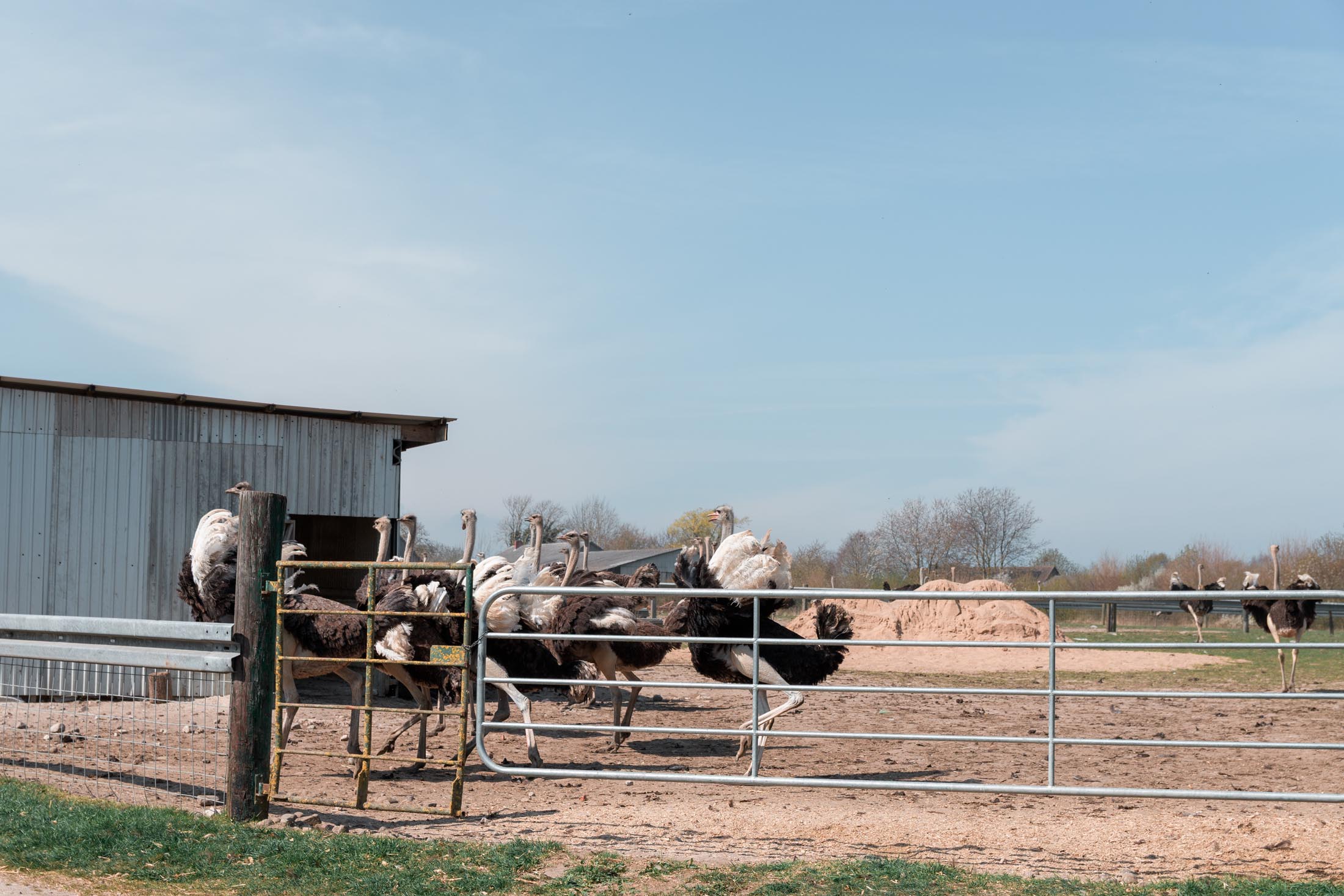
Ostrich farm Ostseeblick
The Ostseeblick ostrich farm in Hohenfelde, Schleswig-Holstein, is a unique excursion destination right by the Baltic Sea. Around 170 ostriches live here, which visitors can observe along a hiking trail or in the stables. The chick rearing is particularly fascinating, where you can follow the development of the ostrich chicks from egg to adult bird. The farm's own bistro offers various ostrich specialties such as steaks, meatballs and goulash prepared from the farm's own ostrich meat. The farm store sells ostrich-related products, including meat, sausages, eggs and ostrich leather products. The ostrich farm is open daily, with opening hours varying depending on the day of the week. Dogs are welcome, making the farm an ideal destination for family outings. The Ostseeblick ostrich farm thus not only offers an insight into the world of the largest birds on earth, but also culinary delights and regional products in a picturesque setting by the Baltic Sea.
View Images
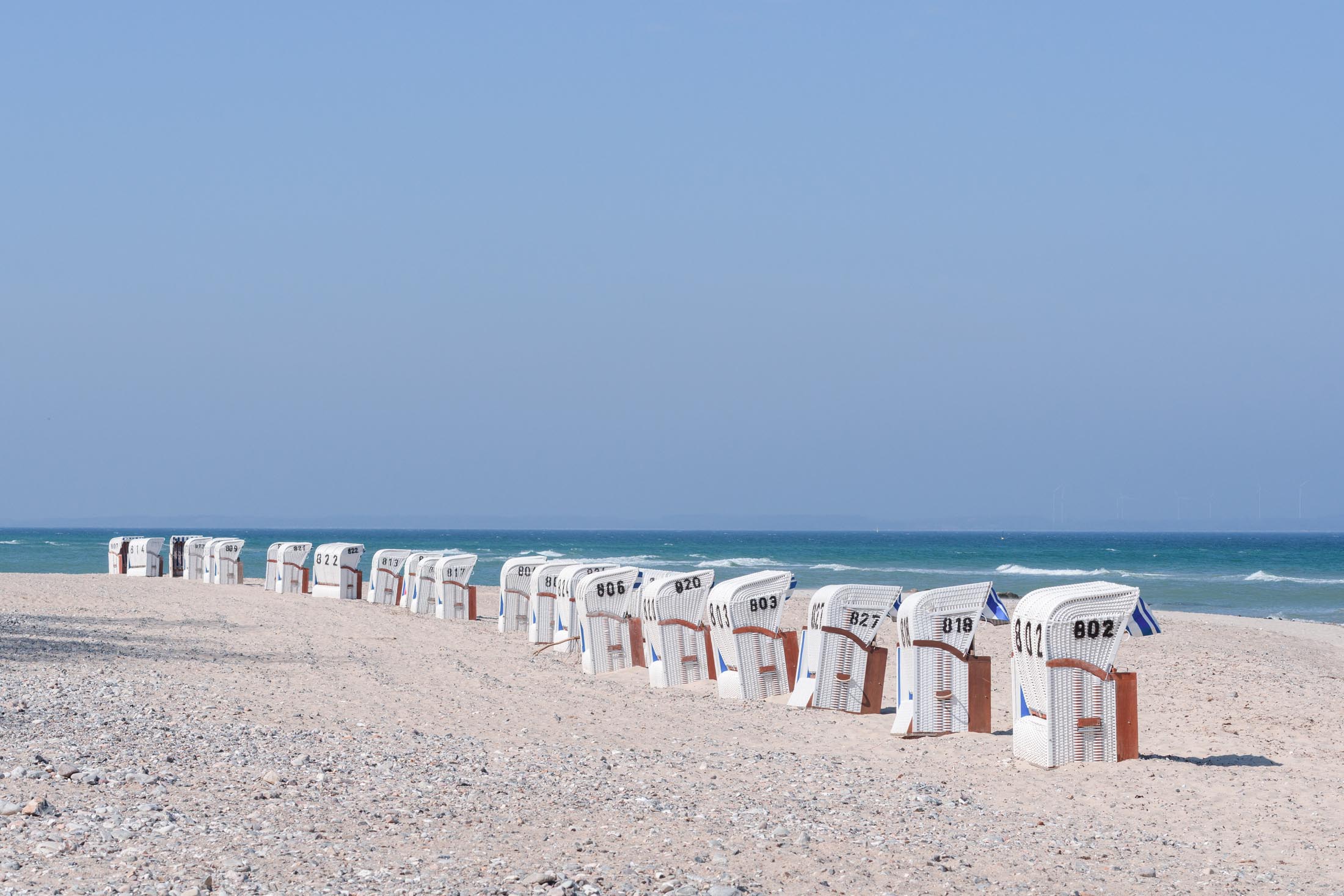
Kiel
Kiel is the state capital of Schleswig-Holstein and is located directly on the Baltic Sea. The city is known above all for its maritime tradition - Kieler Woche, one of the largest sailing events in the world, starts here every year. As an important port and shipyard location, Kiel also plays an important economic role. The fjord characterizes the cityscape, and many ferries and cruise ships call at the port of Kiel every day. Kiel is also a university city with a lively student scene and offers a mixture of coastal flair, science and maritime history.
View Images
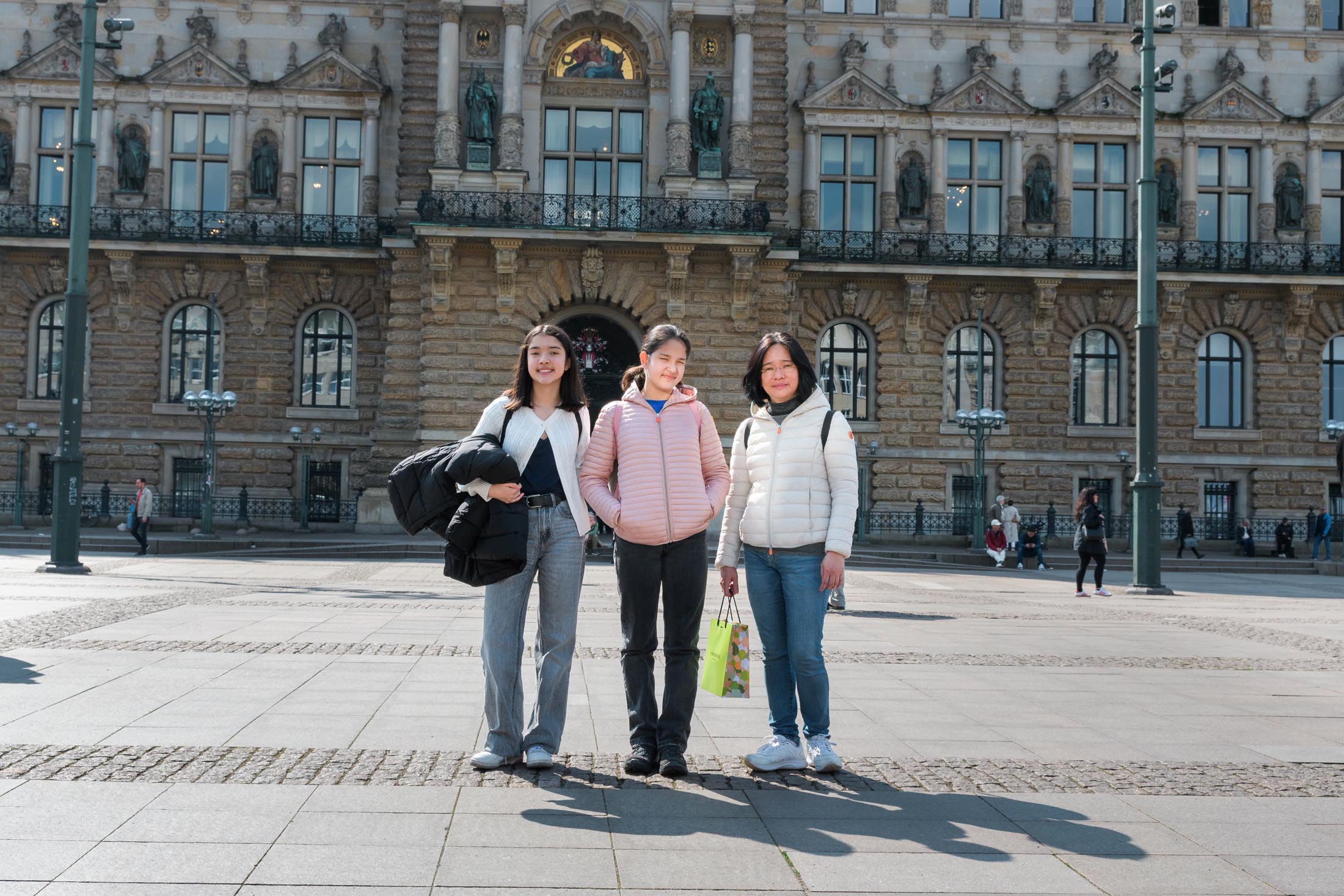
Hamburg
Hamburg is a lively port city in northern Germany, known for its maritime atmosphere and impressive architecture. The city combines Hanseatic tradition with modern metropolitan flair and offers numerous cultural highlights. The Elbe River, which runs through the cityscape and provides access to the North Sea, is particularly influential. In Hamburg, you can feel the influence of trade, which has shaped the city for centuries. Despite its size, the city often appears surprisingly green and open.
View Images
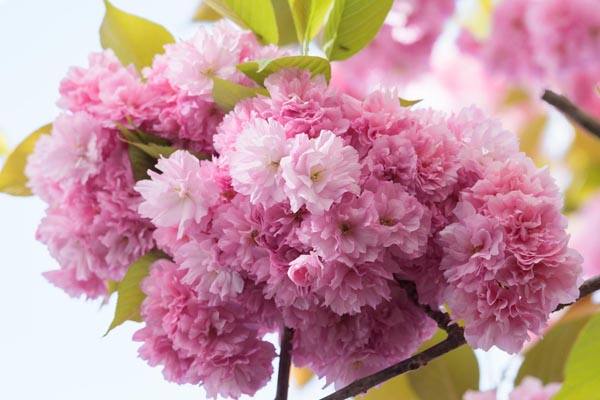
Cherry Blossom Bonn
Every spring, usually in early to mid-April, Bonn's old town is transformed into a sea of pink blossoms. Heerstraße - also known as “Cherry Blossom Avenue” - is particularly famous, where the Japanese cherry trees form a breathtaking canopy of blossoms. It is one of the most photogenic streets in Europe! It's not just a feast for the eyes - there's a delicate scent of blossom in the air, the sunlight filters through the pink leaves and the whole street looks like something out of a fairy tale. Locals and visitors alike stroll through, take photos, enjoy a coffee in the small cafés and soak up the atmosphere.
View Images
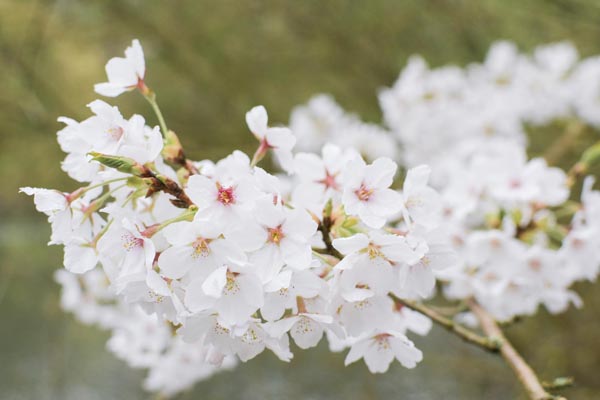
Rombergpark Dortmund
Rombergpark in Dortmund is a beautiful, historic landscape park located in the south of the city. It was created in the early 19th century and is now a green oasis that is very popular with both locals and visitors. The park is characterized by its varied landscape, which includes forests, meadows, ponds and an old arboretum. A particular highlight of Rombergpark is the botanical garden, which was opened in 1951. Here, visitors can admire an impressive variety of plants from all over the world. The garden offers both tropical and temperate plant species and is an important place for research and education.
View Images
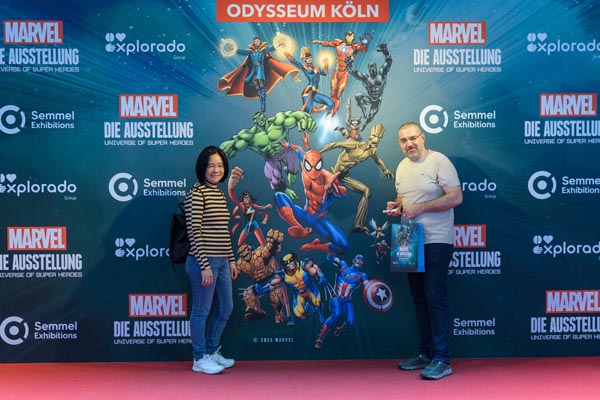
Marvel Exhibition Cologne
Marvel is one of the largest and best-known entertainment companies in the world, famous for its comics, films, series and characters. Originally founded as “Timely Publications” in 1939, the company changed its name to Marvel Comics in 1961 and has since grown into a global phenomenon. The Marvel world is known for its vast collection of superheroes endowed with extraordinary powers and unique stories. Some of the most famous characters include Spider-Man, Iron Man, Captain America, Thor, Hulk, Black Panther, Black Widow and many more. These heroes can be found not only in comics, but also in successful films produced by the Marvel Cinematic Universe (MCU). The MCU, which began with Iron Man in 2008, is now one of the biggest film franchises of all time, with numerous blockbusters that have thrilled millions of fans worldwide. The stories in Marvel comics and films often offer complex narratives about responsibility, morality, friendship and the battle between good and evil, making them an integral part of pop culture. Marvel is not just limited to comics and movies, but also has series, video games and a variety of merchandising products that further expand the Marvel universe and engrave the characters even more firmly in society's collective memory.
View Images
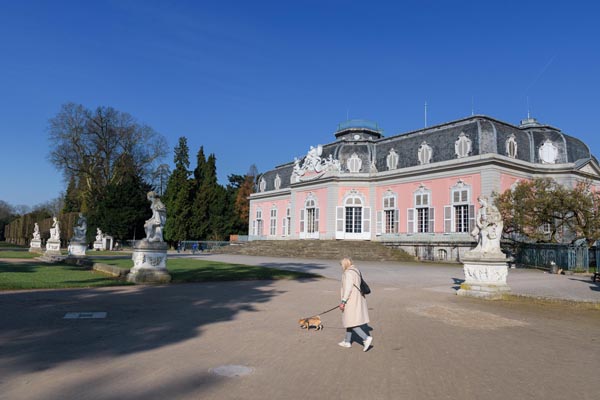
Benrath Castle
Benrath Palace is a magnificent baroque palace in Düsseldorf, Germany. It was originally built as a hunting lodge for Elector Karl Theodor in the 18th century, with construction beginning in 1755 and completed in 1770. The palace is set in beautifully landscaped gardens that reflect the splendor of the period. The architecture of Benrath Palace is an exquisite example of rococo and early classicist design and is characterized by elegant curves, symmetrical facades and ornate details. The building's pink and white color scheme adds to its charm and makes it one of the most picturesque castles in Germany. The castle is home to several museums, including the Museum of European Garden Art and the Natural History Museum, which display collections on gardens, nature and the castle's history. Visitors can explore the palace's magnificent rooms, stroll through the tranquil park and admire the beautiful gardens, which include a formal French-style garden, a formal French-style garden, a Japanese garden and a large pond. Benrath Palace is also a popular destination for tourists and locals alike, as it offers a peaceful retreat from the hustle and bustle of the city and a glimpse into the royal lifestyle of the past.
View Images
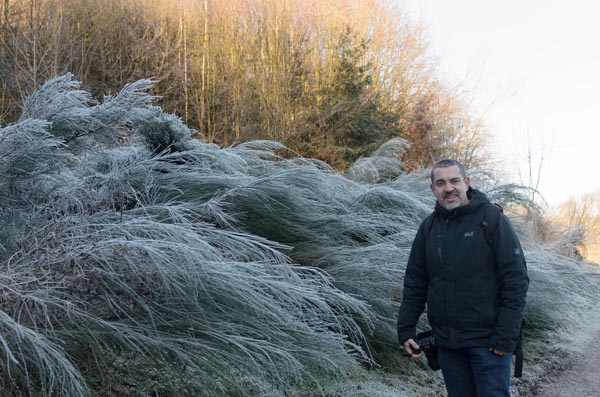
Hasper Dam
The Hasper Talsperre is a dam in the Sauerland region of North Rhine-Westphalia, Germany. It was originally built in the 1920s, primarily to secure the water supply for the surrounding areas and to regulate the flow of the Haspe, which is a tributary of the Ruhr. The dam is located near the town of Hagen and has been a popular destination for hiking, fishing and sailing ever since. The dam itself is a heavyweight concrete wall and a testament to early 20th century engineering. Over the years, the Hasper Dam has been renovated and modernized several times to improve its safety and functionality. It is also part of a larger network of dams in the region that contribute to flood protection and water management in the nearby industrial areas. Aside from its practical use, the area around the reservoir offers beautiful views and is a great place to enjoy nature. The surrounding forest is home to a variety of wildlife and is a peaceful retreat for those looking to escape the hustle and bustle of the nearby cities.
View Images
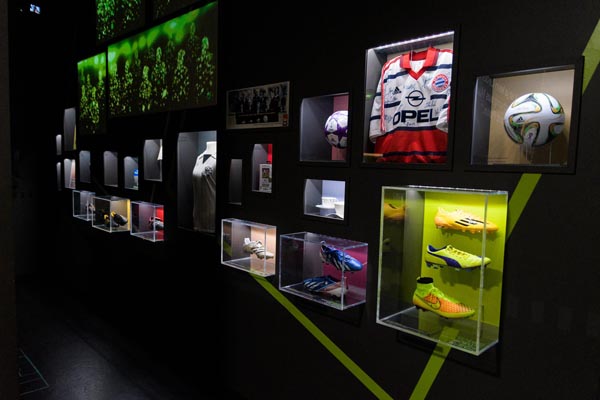
Cologne Sports Museum
The German Sport & Olympia Museum in Cologne is located directly on the Rhine in the former customs port and offers an exciting insight into the history of sport - from ancient times to the present day. Exhibits from various sports, including soccer, athletics, gymnastics and winter sports, are displayed on around 2,000 square meters. The Olympic Games and their political dimension also play a central role. Particularly popular are the interactive stations where visitors can get active themselves - running, jumping or boxing, for example. The museum is not only interesting for sports fans, but also for school classes, families and anyone interested in history and society. It shows how sport connects people and reflects social developments.
View Images
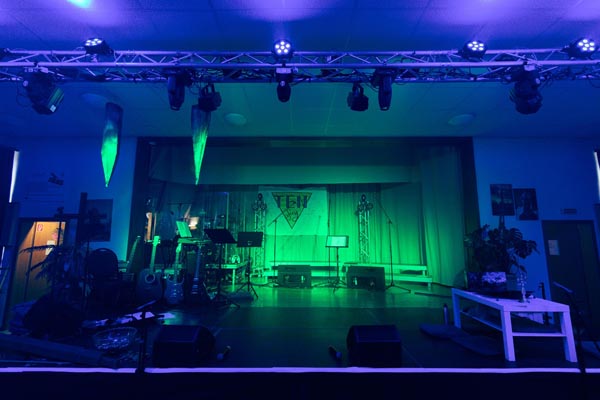
TenSing-Hagen Show
Inas Sofia's first TenSing show. She was actually supposed to sing “Zombie” by The Cranberries as a duet. But her partner fell ill, so she had to perform the song alone. She was very nervous and kept asking herself if she could do it alone. And what can I say ... she blew everyone away. The song suited her voice perfectly. Everyone was thrilled ... the hall was shaking. She got so many compliments on her performance. Overall, this year's show was a great success - a mixture of funny sketches, incredible dancing and lots of singing. We are already looking forward to next year.
View Images
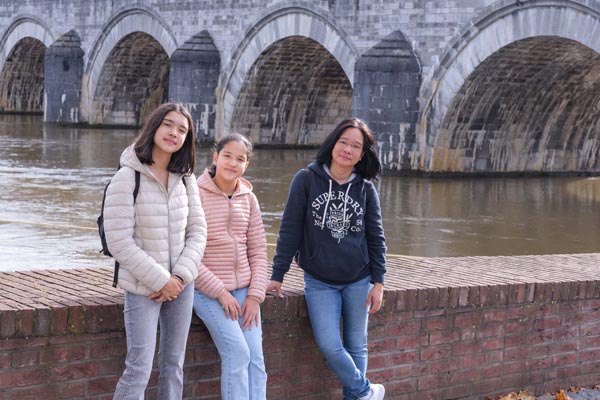
Maastricht
Maastricht is one of the oldest and most charming cities in the Netherlands, located in the south of the province of Limburg, right on the border with Belgium. The city lies on the River Meuse and is known for its rich history, international flair and important role in European politics. Roman roots: Maastricht was founded in Roman times as a settlement (Trajectum ad Mosam). Medieval heritage: The old town is characterized by cobblestone streets, Gothic churches such as the Sint-Servaasbasiliek, Romanesque buildings and old city gates. Church as bookshop: The former Dominican church has been converted into the Boekhandel Dominicanen bookshop - a must for visitors!
View Images
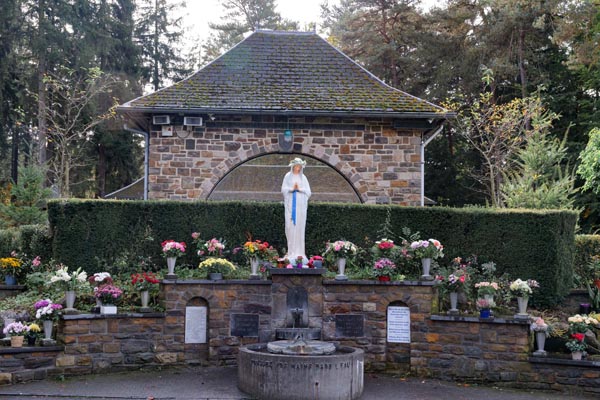
Banneux Notre-Dame
Banneux Notre-Dame is an important place of pilgrimage in Belgium, known for the Marian apparitions that were granted to the then eleven-year-old Mariette Beco in 1933. Between January 15 and March 2, 1933, the “Virgin of the Poor” appeared a total of eight times in Banneux, a small village south of Liège. During these apparitions, Our Lady led Mariette several times to a spring near her home and explained that this water was meant for her. She emphasized the importance of prayer and humility. The Church officially recognized the apparitions: On August 22, 1949, the Bishop of Liège, Mgr. Kerkhofs, confirmed the authenticity of the events. Today, Banneux is a lively place of pilgrimage that attracts numerous pilgrims every year. The “Sanctuaire de Notre-Dame de Banneux” includes the apparition chapel, the spring and facilities for the reception of the sick and pilgrims. Visitors can experience the spiritual atmosphere of the place, take part in prayers and visit the spring, which is still considered sacred. The place of pilgrimage invites visitors to reflect on the message of Our Lady and to immerse themselves in prayer and silence.
View Images

Dreiländereck
The border triangle is a geographically and symbolically significant point in Europe where the borders of Germany, Belgium and the Netherlands meet. It is located near Aachen, near Vaals (NL) and Kelmis (BE), and is a popular destination for tourists. Highest point in the Netherlands: At around 322.5 m, the “Vaalserberg”, the highest point on the Dutch mainland, is located here. Boundary stone: A striking stone marks the exact point where the three countries meet. Tourist site: There are observation towers, a labyrinth, cafés and hiking trails - ideal for family outings. Historical significance: In the past, there was even a “four-country corner” here when the neutral territory of “Neutral Moresnet” existed (1816-1919).
View Images
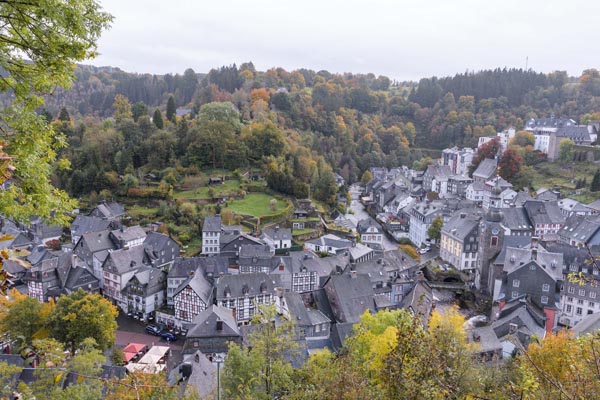
Monschau
Monschau is a picturesque small town in the Eifel region, close to the Belgian border, which is known for its well-preserved historic townscape. The narrow, cobbled streets and half-timbered houses from the 17th and 18th centuries are particularly impressive. The town is idyllically situated in the Rur valley and is a popular destination for tourists, hikers and nature lovers. Monschau's landmark is the mighty Monschau Castle, which today serves as a youth hostel. The Red House, once the residence of a wealthy cloth manufacturer, also tells of the long tradition of cloth production in the region.
View Images
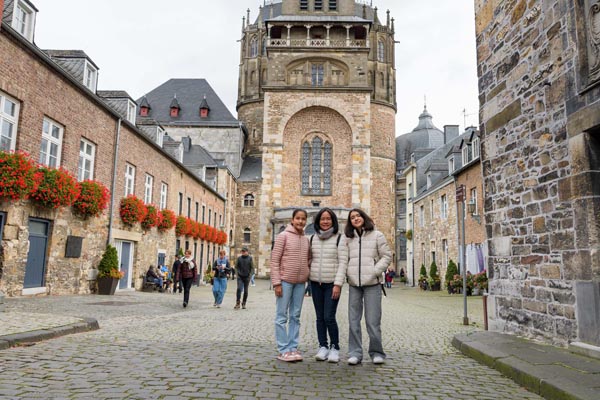
Aachen
Aachen is a city steeped in tradition in the west of Germany, right on the border with Belgium and the Netherlands. It is best known as Charlemagne's imperial city, as a European symbol of unity and as a modern center of science. Charlemagne made Aachen his residence in the 8th century and had the famous Aachen Cathedral built. For over 600 years, Roman-German kings were crowned in the cathedral. Today, the cathedral is a UNESCO World Heritage Site - the first in Germany.
View Images
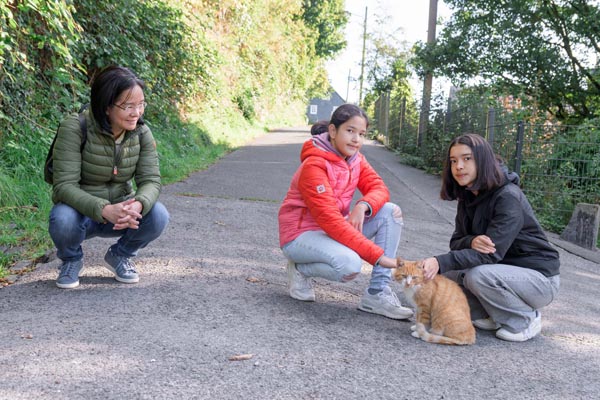
Beyenburg Reservoir
The Beyenburg reservoir is located in the east of Wuppertal and is a popular local recreation area in the Bergisches Land region. It was created by damming the Wupper and offers an idyllic setting for walks, bike rides and nature watching. The historic Beyenburg Monastery, a former Cistercian monastery from the 14th century, is located in the immediate vicinity and lends the town a special charm. The reservoir attracts many visitors, especially at weekends, who come to enjoy the peace and quiet or follow the watercourse. Water sports are also possible to a limited extent - for example canoeing or fishing. Beyenburg and the reservoir are a real insider tip for anyone who wants to combine nature and history.
View Images
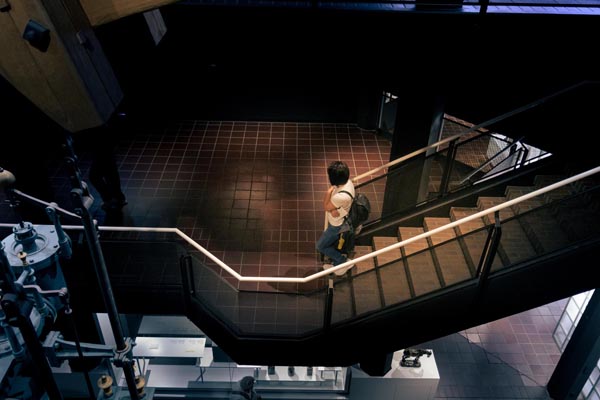
Mining Museum Bochum
The German Mining Museum Bochum is the world's largest mining museum and also an important Leibniz research museum for georesources. It was founded in 1930 and is located in Bochum, North Rhine-Westphalia. The museum is dedicated to collecting, preserving, researching, exhibiting and communicating the material heritage of mining. Its research areas include archaeometallurgy, mining history, materials science and mining archaeology. The museum's permanent exhibition is divided into four tours: Coal, Mining, Mineral Resources and Art. These offer visitors a comprehensive insight into the history and technology of mining. Particularly impressive is the demonstration mine, a 1.2 km network of underground galleries that brings everyday life underground to life. The headframe of the former Germania colliery, the museum's largest exhibit, also provides a sweeping view over the Ruhr region. The museum is recognized as a Leibniz Research Museum for Georesources and is supported by the DMT-Gesellschaft für Lehre und Bildung mbH and the city of Bochum. It is a member of the Leibniz Association and is one of the most visited museums in Germany.
View Images

Botanical Garden Bochum
Bochum Botanical Garden: a hidden gem at Ruhr University Bochum Dad Christian and mom Karen were thinking about what we could do on a Saturday morning and Ina came up with the idea: why don't we visit the botanical garden at Ruhr University Bochum? Everyone was curious to see what it looked like there, only Ina knew a little about what we would see, but our expectations were not disappointed! We saw greenhouses with many different plants from many different continents and countries, flower fields and even a typical Chinese building! Unfortunately the weather wasn't the best that day, but we still had a lot of fun and can imagine that it will be even more fun on a hot summer day...
View Images

Kite festival at Lake Phoenix
As usual, the Voicu family just wanted to go for a walk at the Phoenixsee in Dortmund. We weren't expecting anything special, but were curious because almost all the parking spaces were taken ... Normally there are still plenty free at this time of day. Luckily, we got the last parking space and were able to go for our walk. Suddenly we discovered a festival where people were racing in boats - the boats were shaped like dragons. Even though we didn't know anything about this festival beforehand, it was a great experience to watch these people having fun with their hobby - for example: Dad's work colleague Christian.
View Images
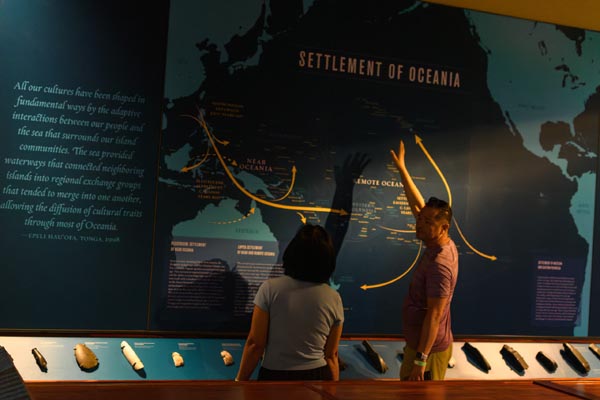
Hawaii - Aloha Ohana
Hawaii has always been the place I wanted to travel to. When I was a little boy and did something naughty, my grandmother would always say:“Christian, if you don’t stop that, I’ll pack your bags and send you to Honolulu.” Back then, I had no idea what that even meant. As an adult, I found out that this place actually exists, and I said to myself: “One day, I want to see this place.” Today, I’m married and have two children — and together, we finally made it and visited this place. A big thank you to the Tolentino family who made this dream come true. They drove us to every place we wanted to see, even though they actually hate driving — at least one of them does. (If he’s reading this, he definitely knows who I mean.) Once again, thank you so much for that.
View Images
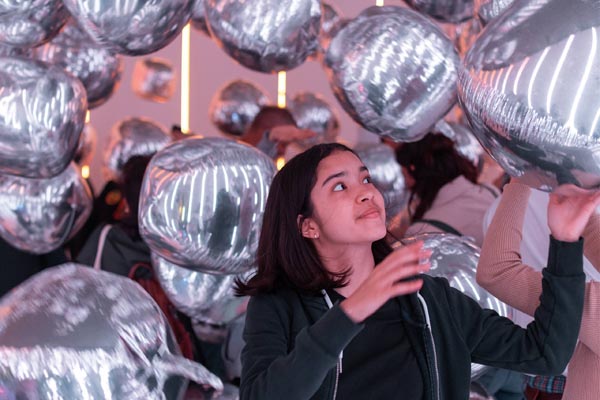
Balloon Museum Düsseldorf
The Balloon Museum: A museum that travels all around the world — this time in Düsseldorf, Germany. Dad Christian and Mom Karen booked four tickets to the Balloon Museum in Düsseldorf. Everyone in the Voicu family was so excited, but unfortunately, Ina was sick that day and almost couldn’t visit the museum. Mom Karen brought her back to life with lots of paracetamol to bring down her fever — a typical Filipino remedy. We experienced the truly beautiful design of the many different balloon shapes, lights, and colors — and it was definitely worth it.
View Images
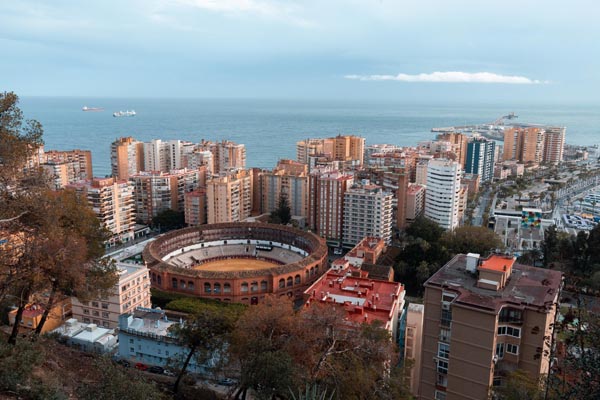
Malaga
Málaga: A truly beautiful city in Andalusia, Spain, and the Voicu family who visited it. Our journey to Málaga began at Düsseldorf Airport. We thought it would be just a normal flight, like always. Instead, it turned out to be the most turbulent flight of our lives — and we will never forget it!!! Of course, we wouldn't be the Voicu family if we didn’t eat something as soon as we arrived, so we went and had some delicious Spanish empanadas. We also managed to explore the city, visit the Cathedral of Málaga, a local market, and Malagueta Beach, and even saw an Easter procession. For the kids, it was their very first Easter procession, and everyone enjoyed it. It was a wonderful experience since such processions aren’t celebrated in Germany. On the second day, we found our favorite restaurant in Málaga, where we ate delicious paella and more. We also visited the Alcazaba, where we saw adorable stray cats. The next day, it rained heavily, so we visited many, many churches, as there wasn’t much else we could do. Our first day trip to another city — Marbella — happened on the fourth day. Marbella is a great city with beautiful coastal areas, a charming old town, and much more. After visiting Marbella, we also went to the Picasso Museum in Málaga. Did you know he was born in Málaga? The kids didn’t know that at first. The second of April: Dad Christian’s highlight of the entire vacation — Gibraltar. He had booked the trip to Gibraltar a few days in advance, and when the day finally came, everyone was soooo excited!!! On our way to Gibraltar, we learned there were still spots available for a guided city tour, which Dad Christian booked immediately. That was a very good decision, because we got to visit a stunning cave with stalagmites — one that even Queen Elizabeth II visited — and we saw the famous monkeys on the Rock of Gibraltar. We even saw a baby monkey and wanted to take a photo with it — but suddenly, it tried to steal Ina’s sunglasses!!! And the tour guide took pictures while the monkey was stealing them! She didn’t try to stop it because we had been told not to touch the monkeys, so she was afraid to intervene. At least now we have some funny family photos from Gibraltar. After our tour of Gibraltar ended, we had a little time to explore the city on our own — and of course, we went straight to lunch… because we wouldn’t be the Voicu family otherwise! We also visited the church where John Lennon got married, which made Mom Karen very happy. Sadly, that was our last day of the Málaga/Marbella/Gibraltar vacation, and we had to return to Germany the next day — but luckily, our trip ended with the best memories ever.
View Images